Wall Street Station
Heins + LaFarge and Squire Vickers left their marks on this financial hub — and the last remaining ticket booth in New York
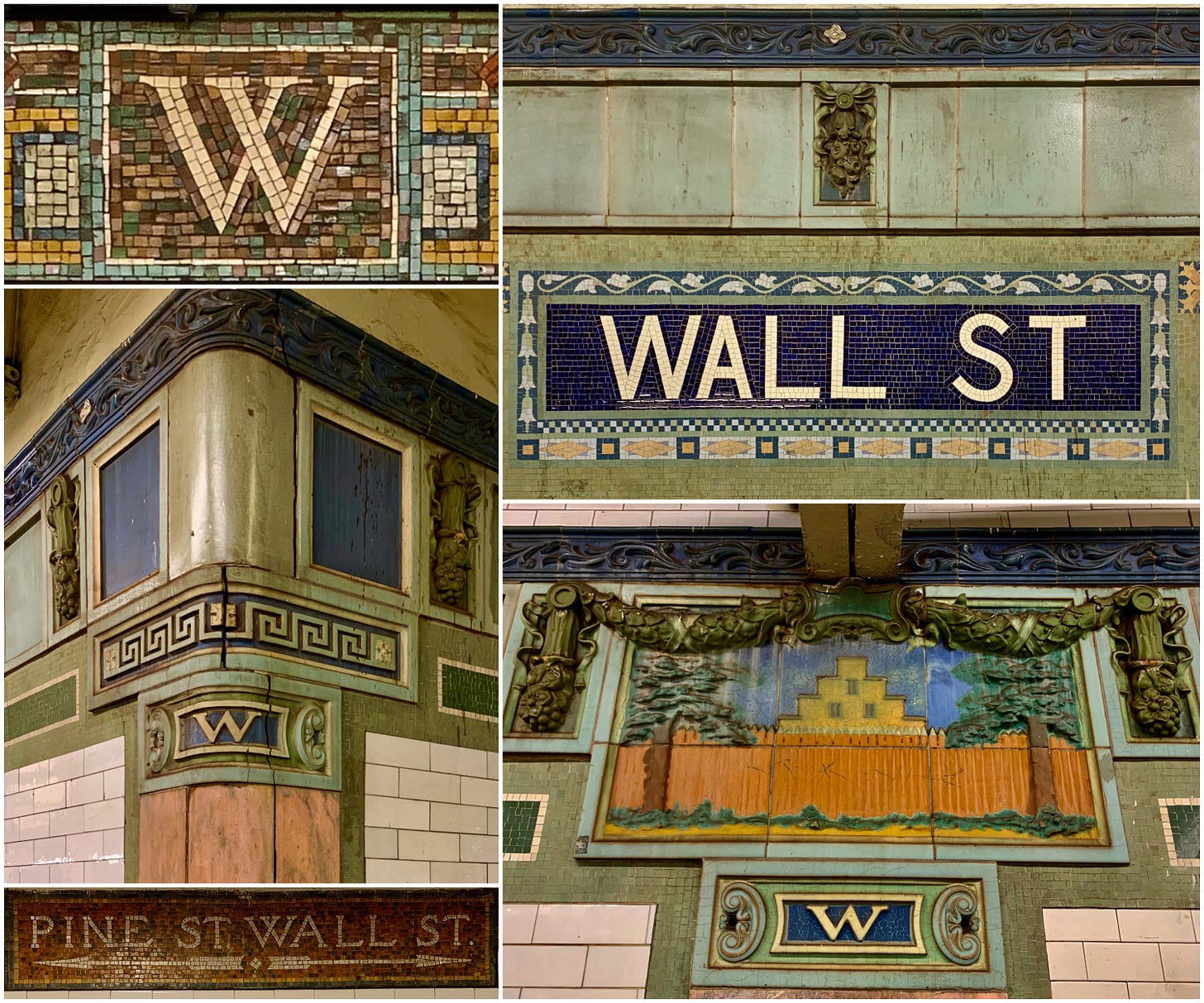
Even entering the Wall Street Green Line subway station on Lower Broadway near Trinity Church can feel like traveling to 1904 in a time machine. First, the cast iron, curved hoods covering the stairwell have an elaborate leaf pattern, and match with the deep green lamp posts nearby.
Mostly designed by Heins & Lafarge, the Wall Street station features, among other things, fare control areas at platform level, including a disused oak token booth, the last of its kind in the New York Subway system. Beneath the street stairs leading to Wall Street are wooden doorways that formerly led to men's and women's restrooms, with corresponding marble lintels.
Meanwhile, the walls along the platforms consist of a pink marble wainscoting and divided at 15-foot intervals by pink marble pilasters, each topped by blue-and-green tile plaques, which contain the letter “W” surrounded by a Greek key carving. Above these “W” plaques are faiences that depict a New Amsterdam step-gabled house with the palisade wall in front of it — a reference to the namesake of Wall Street. The original interiors were listed on the National Register of Historic Places.
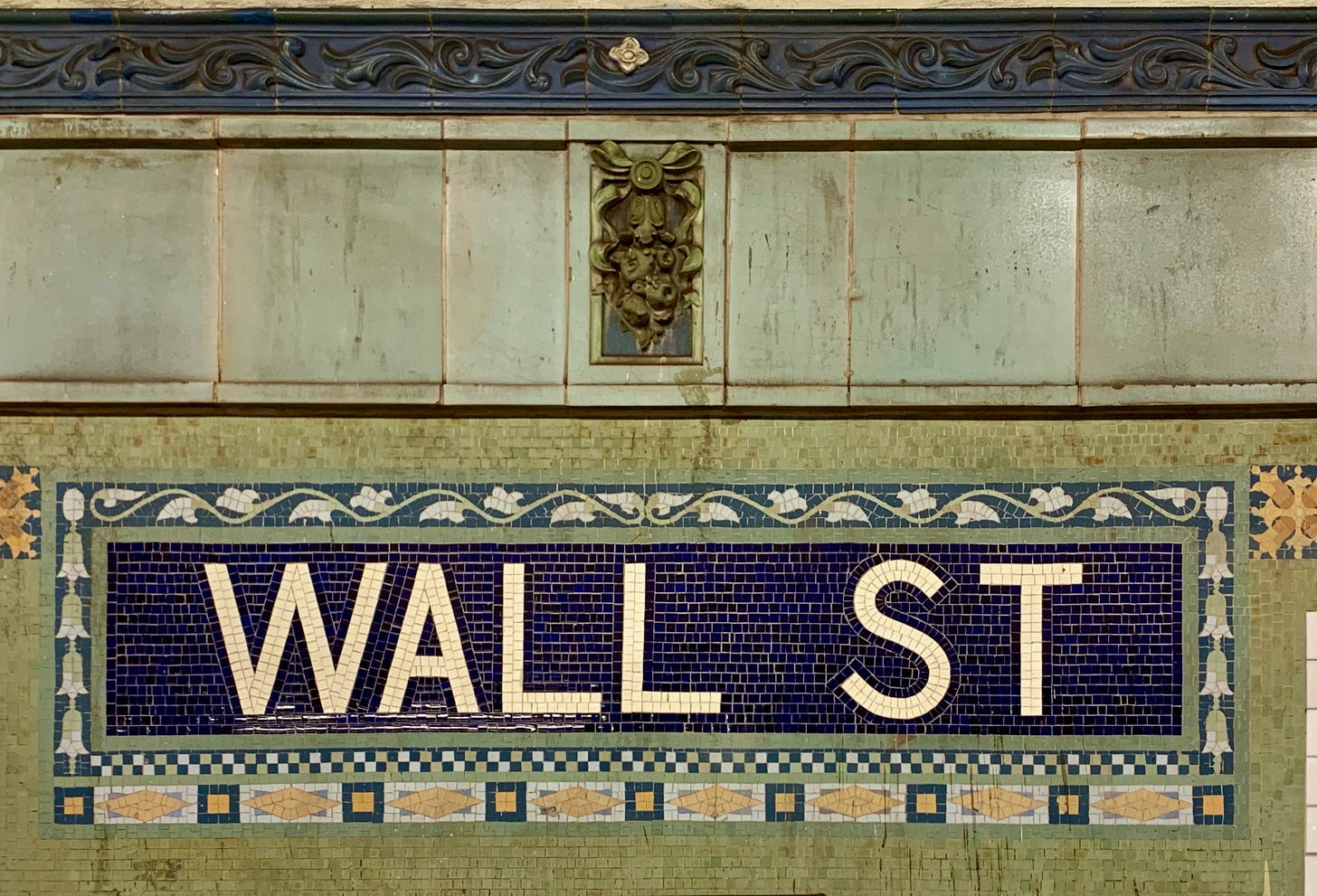
In addition to collecting, the MTA’s Arts + Design division — the bureau tasked with decorating the subway — has a $55 billion remit to ensure that the century-old transportation network’s existing decorative elements are restored and renewed. Yet several of the uptown Heins & LaFarge terra cotta signs at the original twenty-eight stations are chipped and defaced, while many mosaics of the subway’s second architect, Squire Vickers, across the boroughs need a good cleaning.

From practically the beginning, artists who paint and draw for Arts + Design — including the original work — have been given a list of approved materials and fabricators for their work, as well as directions for a set of processes that would ensure its durability, rehabilitation potential and longevity. All painters, in the tradition of Vickers, are encouraged to use mosaic fabricators for the execution of their final works in the subway, usually derived from drawings or paintings.
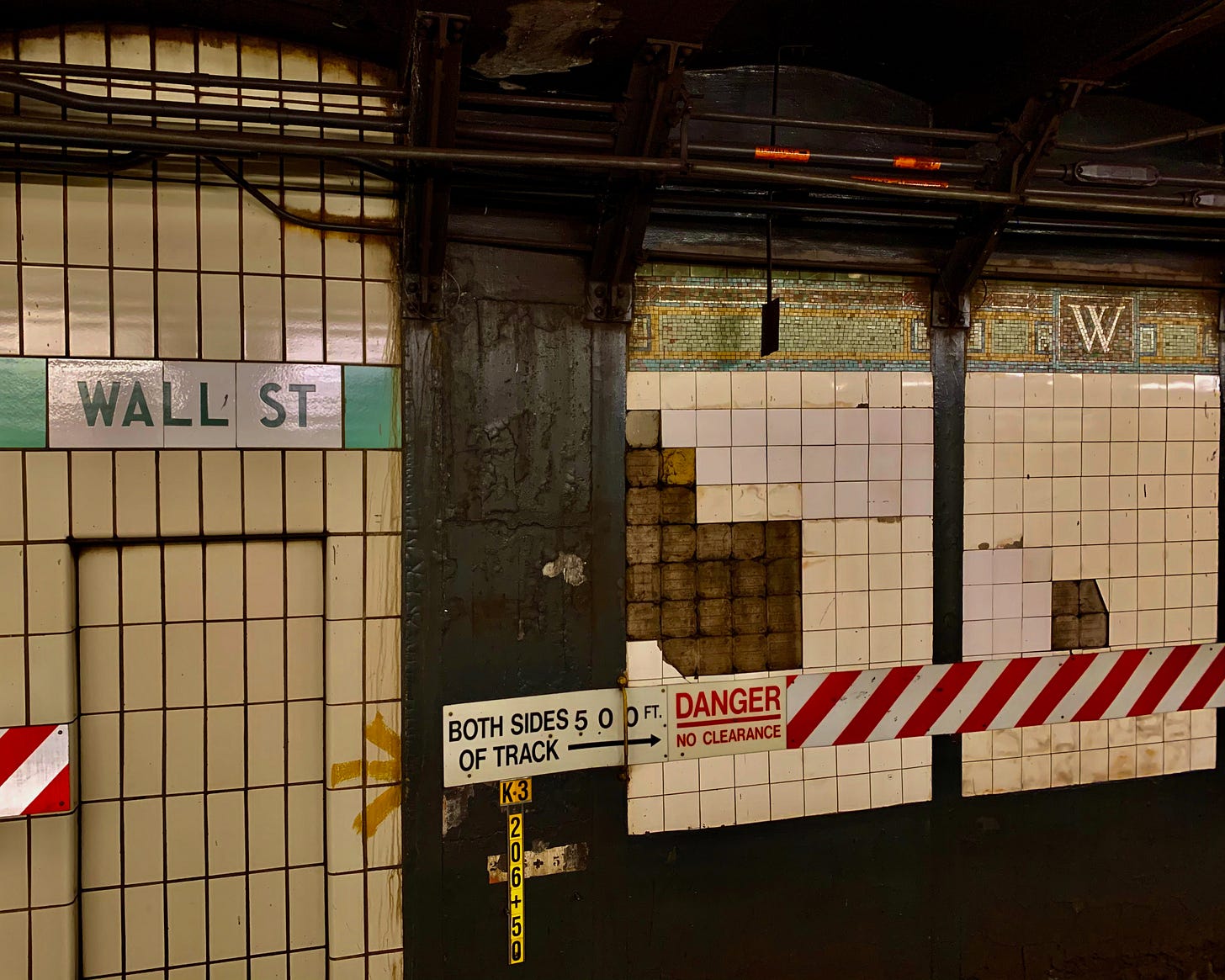
On March 20, 2022, the MTA announced its Re-NEW-vation Program with the goal of renovating the older, historic stations, from undertaking concrete repairs and water mitigation efforts to replacing tiles along the station walls, and deep cleaning everything. So far this year, the MTA has completed eleven of twelve scheduled facelifts and is on track to complete fifty by the end of the year, including Morgan Avenue, whose Squire Vickers’ tiles are obscured by graffiti, and Delancey/Essex, which needs scouring.

When considering submitting to the MTA Arts + Design program, artists come to realize that at least 500,000 people traveling through certain stations every day, especially Wall Street, with its proximity to the financial markets and the Battery. More people are likely to see the piece on than all of an artist’s shows put together. Because of that visibility, artists willingly take the risk of having their art defaced. In fact, many believe that changes to the subway art are not necessarily problematic, but emblematic of the relationship between art and the city.
Still, many want a serious conservation department — not just an initiative here and there. “Every major museum has a department of conservation, and right now, the MTA has essentially created a contemporary art museum underground,” said one artist who had her trompe l’oeil paintings made into 3D mosaics uptown. That said, the MTA suffered considerably during Covid and ran on a projected deficit of $1.6 billion in 2024. Its proposal to reduce budget gaps through 2028 by an average of $915 million annually leaves many wondering how the subway and commuter trains will keep running when federal aid runs out, let alone how the MTA can showcase new art.
When it comes to its pieces installed, the subway is possibly the most racially, ethnically, intellectually and gender-diverse collection of art among any of the institutions of New York. And most artists would never want the conservation to supersede the new work, as the new work keeps the subway exciting. “New York is constantly reinventing itself for better or worse and people are experiencing it in different ways,” the artist said. “Some people are going to come out of the Port Authority every day and forget about it, while others are going to think they saw something very special, whether mine is there in 1,000 years or something else.”
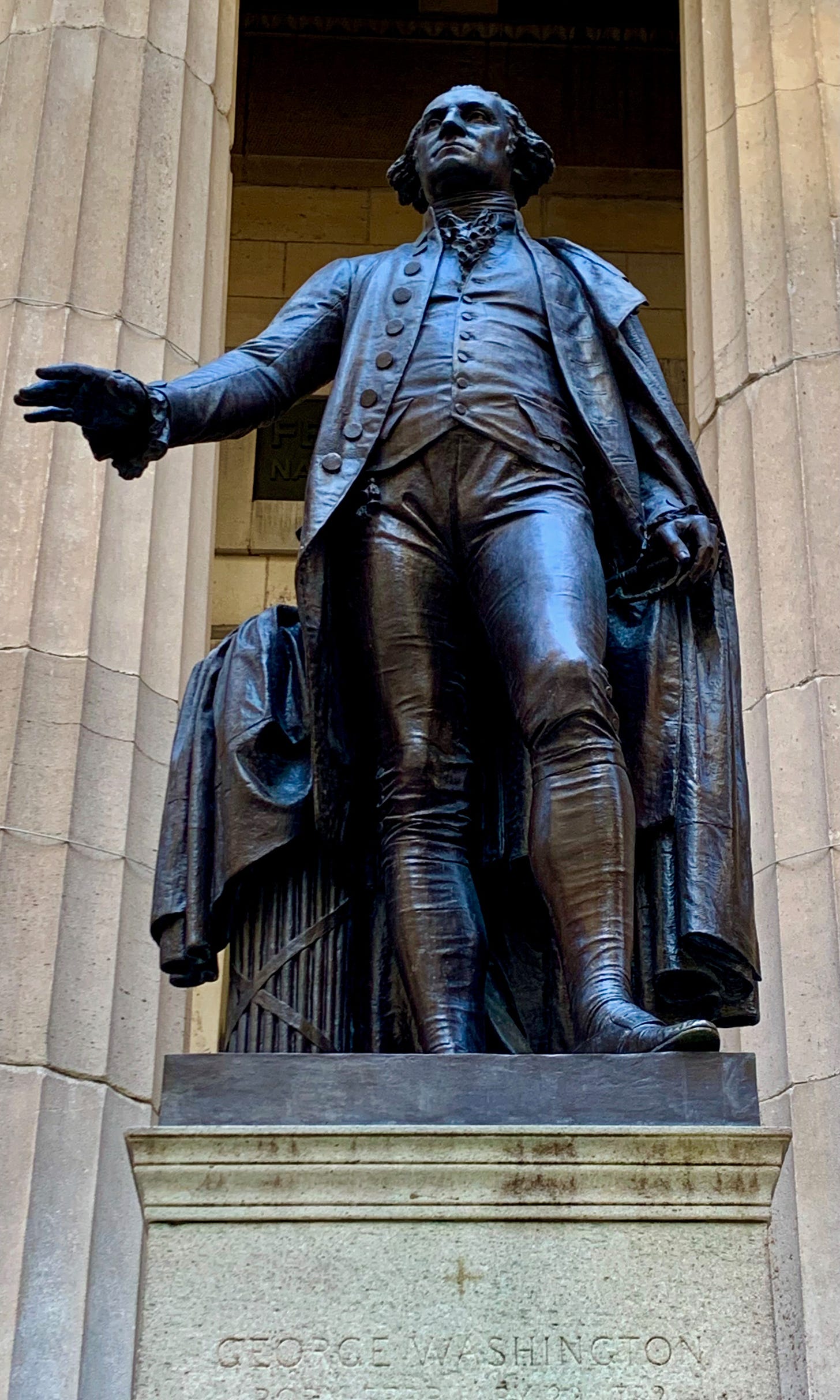
Coming Soon: A Guide to the art of all 472 stations of the New York City subway:
From 2018 through 2021, I stopped off at 400+ stations of the New York City subway, took photographs of the public art there and researched the origin of the art, first for Instagram, then for Substack, for a 2023 Spectator article and now, hopefully, for a guidebook. A proof-of-concept book proposal 472 Stations: The People’s Guide to the Art of the New York City Subway has been optioned by a publisher in London. More information forthcoming.








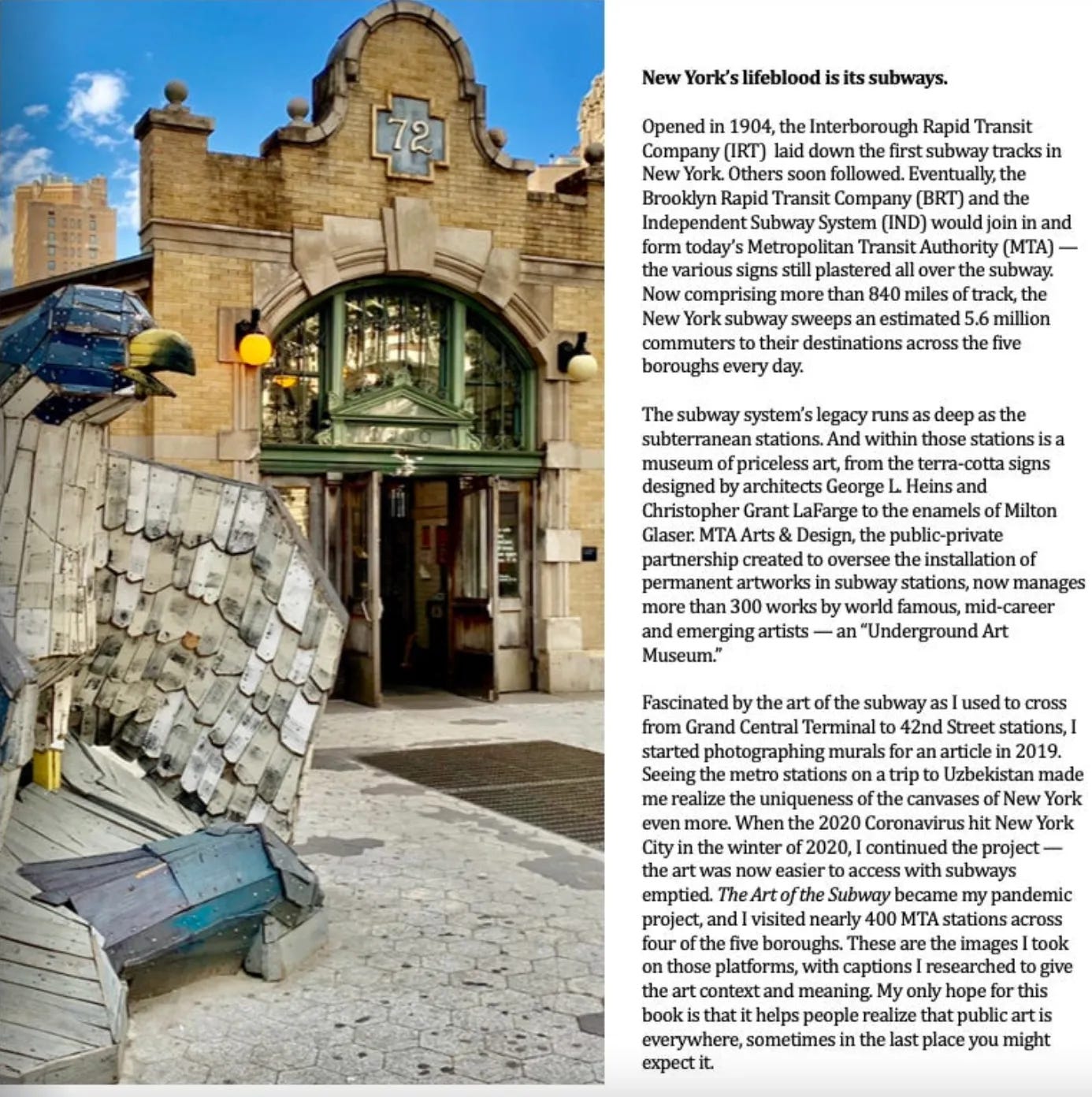
Fabulous! I remember the ticket taker booths in the NYC subways. The nice people used to give directions pre-GPS. Thank you.